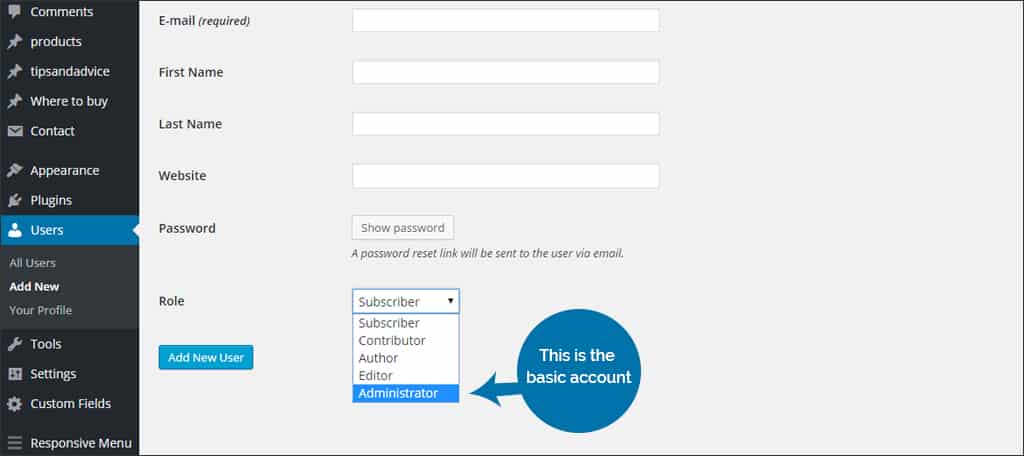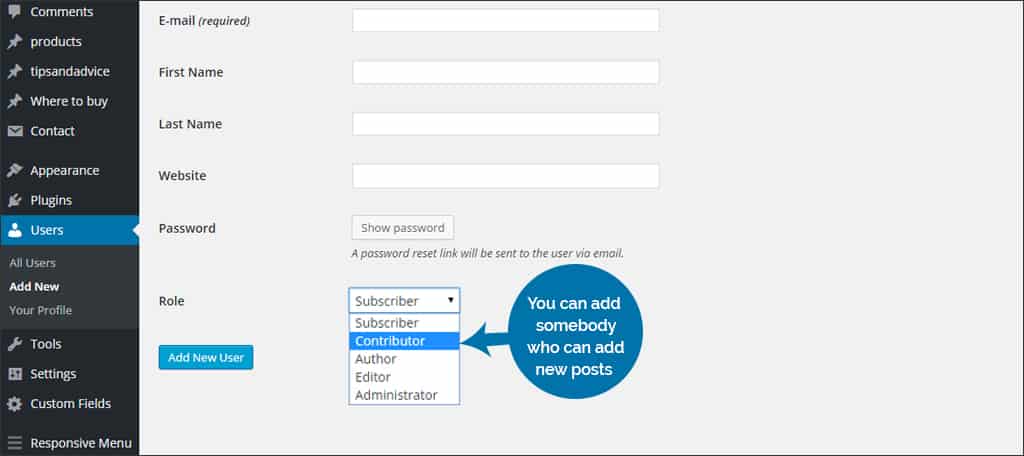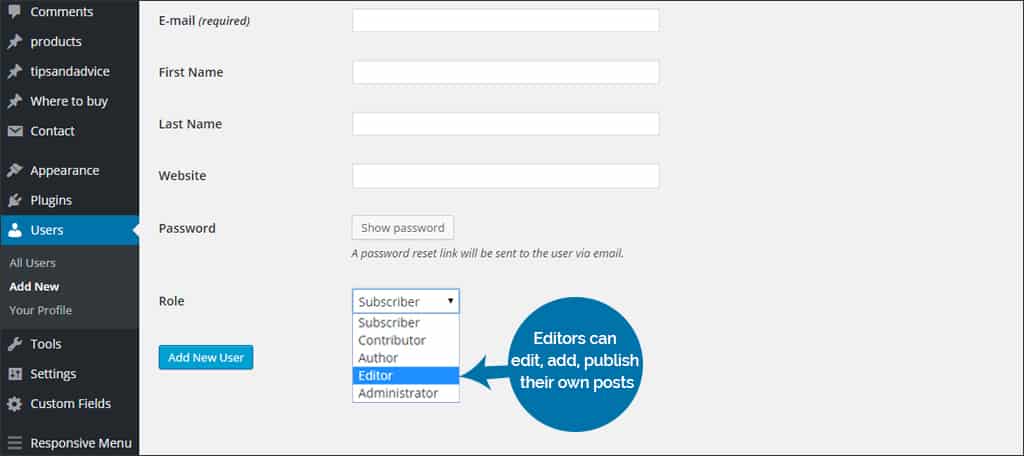WordPress is a fantastic publishing platform and you do not have to manage the responsibilities of it alone. WordPress makes it really easy to add new users and assign the users various roles and permissions. I can see where adding a new user to WordPress might make some people nervous. However, just because they also have a way to log into your admin tools does not mean they have the same permissions you do. Here is everything you need to know about adding a new user in WordPress.
WordPress has two ways of allowing you to add new users. You can display the registration form on your website to the public or you can manually add users. To manually add a user to WordPress follow these steps.
From the WordPress dashboard, click on Users > Add New and then fill out the details about the person you are adding. All of these boxes are pretty self-explanatory. You do however need to provide them with a strong password. They will have the option to change it later if they wish.
Now I want to take a little ‘bit of time to explain the different user roles in WordPress. By default you have five different user roles to choose from. These include administrator, editor, contributor, author and subscriber. What are the differences?
Administrator

An administrator account is just like the basic account you use to log into WordPress. With it, the user could do all the same things you can. This includes modifying posts, changing site-wide settings, and changing other administrator options.
Contributor

If you want to just add somebody who can add new posts and only edit their own posts, you need to make them a contributor. This person can write posts but cannot publish them. They also do not have access to edit other users’ posts in WordPress.
Author

A user with the author permission can publish and manage their own posts. However they cannot edit or manage the posts of other users. If you want to give somebody permission to publish content when they wish, this is the best permission to assign without giving them access to other more advanced parts of the WordPress administration.
Editor

One step up from a contributor is an editor. Editors can edit, add, publish their own posts and posts written up by others. However, they cannot change website settings, themes or things only administrators can.
Subscriber

The subscriber role is a user that has all permissions stripped from them. The only thing they can really do is update their own profile. Some plugins for WordPress use this user role for special situations, such as store access, comment submission and more.
From the WordPress dashboard, an administrator has the option to edit, add or remove users by clicking on the Users link in the WordPress sidebar.
Now you should have all the basic knowledge needed to add a new user to your WordPress installation. By adding more users, you can easily distribute the workload or responsibilities of a number of things to a number of people. The possibilities are endless. From giving each author their own bio box to displaying a list of articles on your website, which step do you see yourself taking next?
